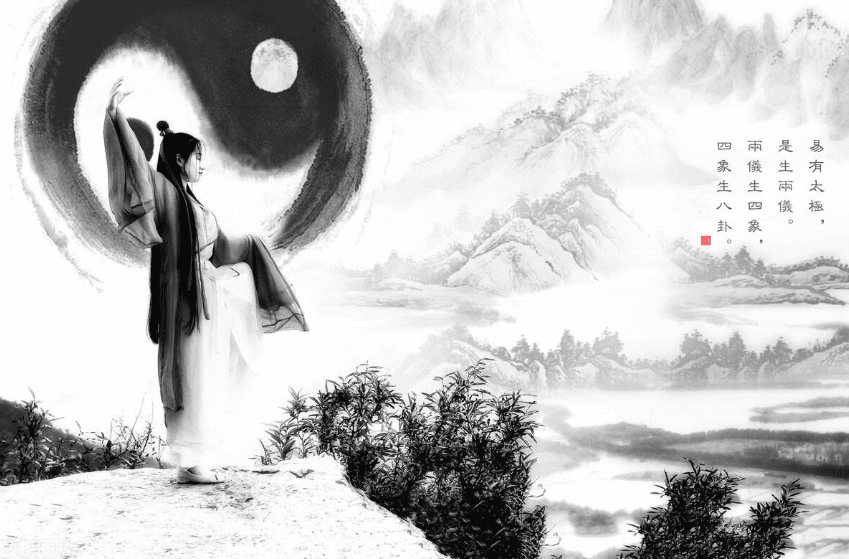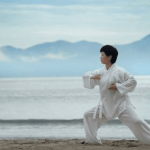
30 tips for practicing Tai Chi help you to improve
- In Tai Chi or Taychi, when practicing any movement, you should balance your body by shifting weight between different parts, creating a sense of emptiness and fullness, and expanding and contracting. If you make one side of your body smaller, the other side should become bigger. The same idea applies to your upper and lower body, as well as your front and back.
- Before performing any hand movements in Tai Chi, it’s important to relax your sides, followed by your shoulders, elbows, and wrists. This sequence of relaxation is crucial for proper execution.
- “Relaxing and sinking” doesn’t mean your entire body goes lower; it’s about letting the area below your navel sink while the area above it remains lifted. This helps you maintain a constant sinking power and continuous energy flow.
- When practicing Tai Chi forms, the focus shouldn’t be solely on the fixed postures. The transitions and connections between different movements are the most important, allowing you to achieve a smooth and continuous flow.
- If you find it challenging to relax a particular part of your body, shift your attention to the area just above or below it and try to release tension there. This can help you achieve a more balanced and relaxed state.
- During Tai Chi practice, it’s essential to maintain three “emptiness” areas: the palms of your hands, your chest, and the soles of your feet. Keeping these areas open and relaxed is important for proper movement.
- “Gathering energy into the bones” involves directing your focus to bring your shoulders and back closer to your spine and down to your tailbone, creating a grounded and connected feeling.
- When practicing Tai Chi forms, internal energy should have a sense of rising and falling. This is due to your legs being relaxed, allowing your body to be influenced by gravity. When it sinks to the lowest point, your body will naturally rebound upward. This principle should be present throughout the entire form.
- When we talk about “relaxing and sinking,” it’s not about collapsing downward. It’s more like a piece of paper floating downward in the air. When one side sinks, the other side rises, and vice versa. This gentle flow helps maintain balance.
- When cultivating the energy in Tai Chi, imagine that you have four layers of skin covering your head, back, chest, and hips. At any given time, focus on expanding only one of these “skins” to achieve a balanced energy flow.
- In any Taychi movement, there should be a sense of pulling or balancing. For example, when your hand moves upward, your body sinks downward slightly (imagine a layer of skin at your hips). If your hand extends forward, your body should move backward (imagine your back stretching). It’s like your hands and body are gently pulling in opposite directions, or like a ball expanding in all directions.
- After completing any Tai Chi movement, your posture should include a feeling of lifting the crown of your head, keeping your chest slightly hollowed, relaxing your knees, and maintaining a sense of energy extending from your hands to your fingertips.
- Finish one movement completely before starting the next; do not rush or overlap movements (avoid trying to perform them too quickly).
- Every Tai Chi movement starts from the “centerline” of your body and finishes on the “centerline.”
- Keep your hand palms and fingers relaxed. Your wrist should not be stiff or bent. If done correctly, your hand and fingers should naturally feel full and your fingers should gently open. Avoid using force to squeeze your fingers together or spread them apart. Imagine energy sinking to your lower abdomen.
- Treat both hands as one unit. Imagine an almost imperceptible thread connecting your left and right hands. When one hand goes down, the other is naturally pulled up. When one hand moves inward, the other is guided outward.
- When you move a hand, imagine it expanding in all directions in your mind.
- When pushing your hand forward, relax your shoulder blades. When retracting your hand, relax the position below your collarbone.
- When extending your hand forward, avoid making a circular motion in front of your body. The term “circle” here refers to an invisible but felt round movement that can disrupt your balance if your hand goes outside of it when your opponent sticks to it.
- Techniques for relaxing the shoulders, sinking the elbows, and relaxing the wrists include visualizing water flowing through your arm joints. Imagine gradually opening a valve at your shoulder joint, allowing water to flow down your arm. Once your upper arm is full of water, your elbow will naturally sink. Continue the flow through your elbow joint to your forearm and finally to your palm, fingertips, and beyond.
- When practicing push hands, aim to increase the sense of weight or sinking in your hands. Instead of just pushing downward with force, focus on lifting your head (imagining a slight upward pull) and guiding your body upward, which will naturally make your hands feel heavier. If both hands move to the left, your body should shift to the right, and vice versa.
- Whether you’re practicing forms or push hands, it’s essential to relax each joint in your upper body, including your wrist, elbow, and shoulder joints. Imagine there’s a small inflated ball inside each of these joints, and gently push them open. Additionally, if one or both of your hands create a circular shape in front of your chest, imagine a round ball positioned between your bent hands and the center of your chest. You can visualize this ball expanding and contracting according to your intention. Furthermore, imagine your entire body as a spherical shape. When you expand the sphere, not only do your hands move forward, but your body also moves backward. Your elbows and the sides of your body expand outward, and even your head and feet extend up and down. This expansion happens in all directions at the same time.
- Relaxing your shoulder, elbow, and wrist joints in a particular sequence is a part of mental training. The goal is to make every part of your hand respond to your mental intention. As your hand techniques improve, you can mix up the order of relaxing, for example, wrist, elbow, and shoulder.
- Imagine your body as a bell inside a temple. The inside of your legs forms the inner wall of the bell, and your tailbone is the clapper. The clapper should always remain within the range of the inner wall, meaning your tailbone should never overlap with either leg at any time, avoiding a double-weighted stance.
- Whether you’re doing forms or push hands, when executing a bow step, the rear foot should not push forcefully backward and downward. Instead, open your stance, and relax the ankle, knee, and hip joints, allowing the weight to flow to the foot’s ball and toes, creating a rebounding sensation. This rebounding force travels up to the heel, then through the leg and waist. This gives you a feeling of upward lift at the heel, allowing your body to move flexibly.
- When performing a bow step, transfer your body’s weight from your lower abdomen to the inner side of the front leg’s thigh. Visualize an energy balloon at the roots of each leg. The balloon at the front leg’s root gradually shrinks, causing the front leg’s root to relax, inwardly collapse, and sink. Simultaneously, the balloon at the rear leg’s root expands.
- When turning to the left, move your right foot first, followed by the left foot. Conversely, when turning to the right, lead with your left foot and then your right. Regardless of the direction, maintain an upward intention, and contract one side of your body while using your spine as the main axis for rotation, influencing your whole body to turn.
- Whether practicing forms or push hands, if you want to rotate your spine, make sure the rotation occurs in place and doesn’t involve simultaneous movement in any other direction, such as forward, backward, left, or right.
- During each Tai Chi form practice, focus on one specific aspect, like the shoulders, elbows, wrists, or the transition between solid and empty stances. Avoid trying to work on too many aspects simultaneously, as it can lead to rushing and hinder progress.
- The concept of “mind techniques” or “focus points” is just a tool or a means to help us meet the requirements of Tai Chi. Once you achieve proficiency in a specific focus point and can apply it naturally, you should forget about that focus point, allowing its principles to arise naturally in your practice.
More to read:
What Is Ba Duan Jin? The Most Complete Tutorial For You.
What Should Qigong Beginners Know? Quick Ways To Start
Do You Know How To Meditate? The Easy Way To Do It
How To Learn Qigong? 12 Things Beginners Must Know
What is Qi Gong? How to understand it easily?


